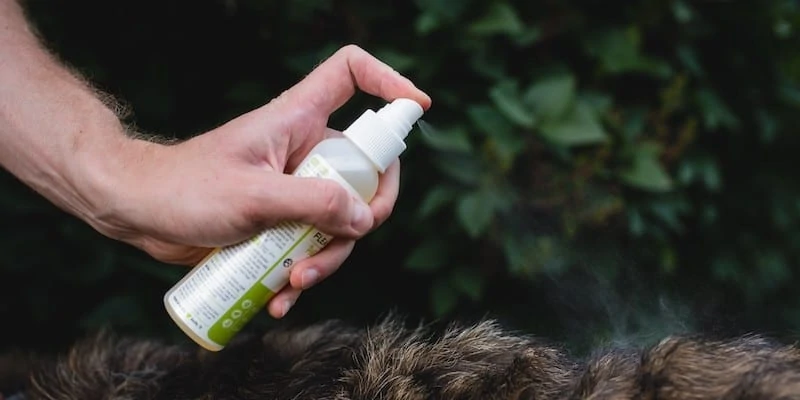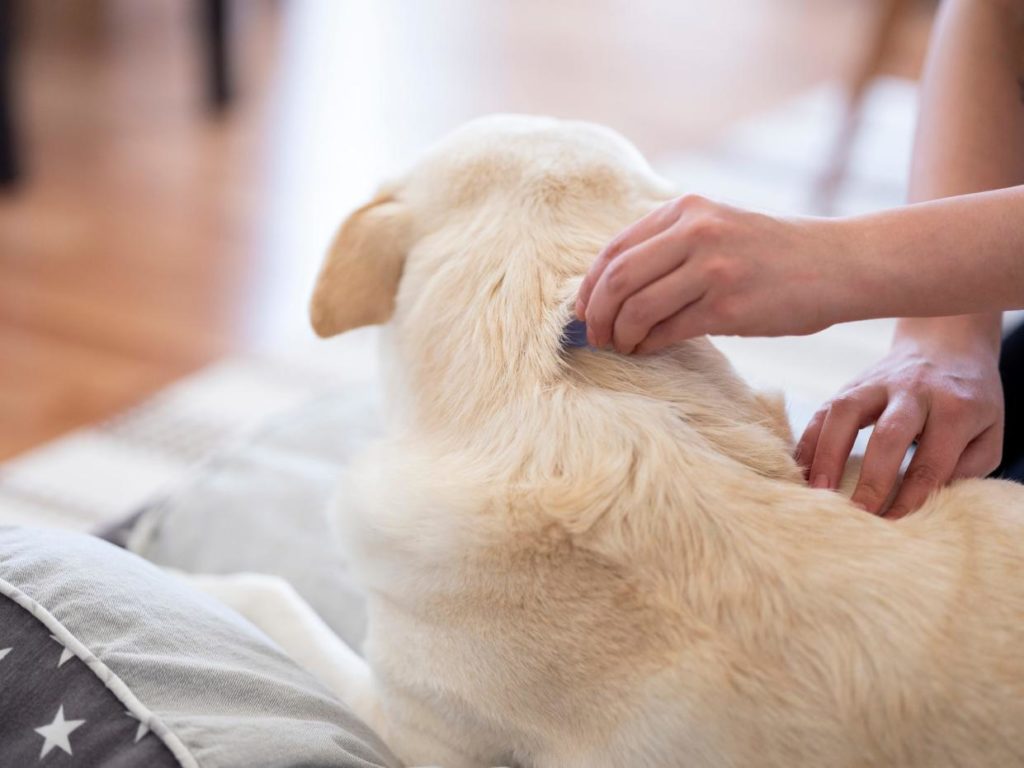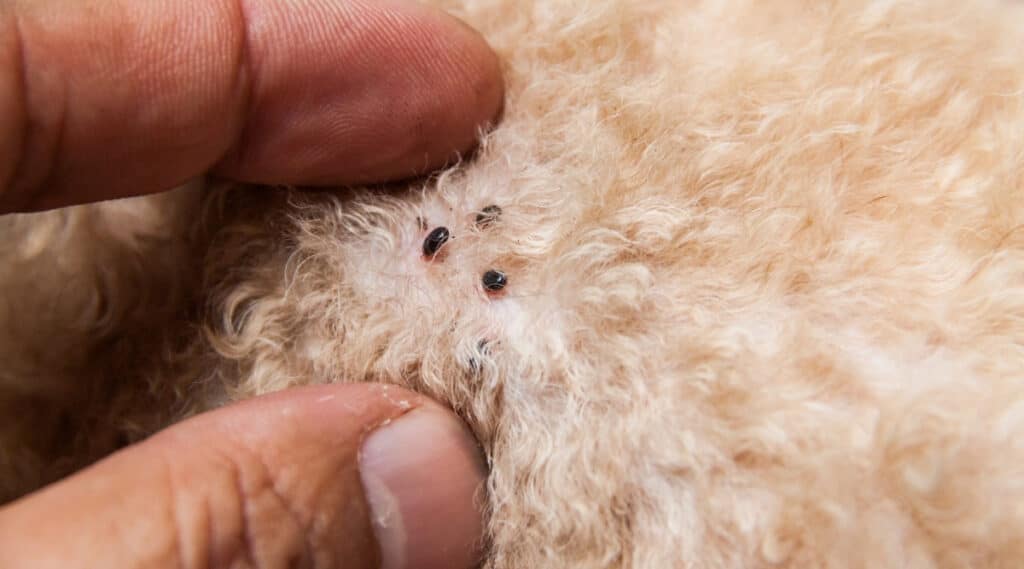Flea bites can cause excessive scratching, red and flaky skin, scabs, hot areas, and hair loss in many dogs. Tapeworm and anemia can also be caused by fleas. Fleas are blood-sucking parasitic insects that torment your dog and infiltrate your environment. Fleas and how to prevent them from biting our dogs can be worrisome.
They have been about the size of a nitwit and have a rusty copper hue. Because fleas abhor light, the ideal place to look for them on a dog is in the furry parts and on the belly and inner thighs.
Dogs are frequently plagued with this parasite as a result of contact with other animals or fleas in the environment. This insect’s strong rear legs allow it to jump from host to host or from the environment onto the host.
The bite of this parasite can induce itching in the host, but irritation in a sensitive or flea-allergic animal can be severe. It can cause hair loss, irritation, and secondary skin infections as a result of intense scratching and chewing. Some pets are susceptible to flea saliva and therefore will scratch all over if just a single flea bites them.
These parasites prefer animal hosts, but if they can’t find any, they’ll bite people. They can spread disease-causing pathogens via feeding on hosts or fecal contamination, which occurs when infected flea feces are scratched into an open wound.
You might wish to prevent fleas and ticks away from your pet and from invading your home. Controlling an infestation might take weeks or months. You may, however, prevent them from beginning in the first place by taking basic precautions.
Here are the easy actions you may follow to get rid of these Fleas parasites.
- Make your Home Flea Free
Keeping fleas from establishing a home on your property is the first line of protection. If you have a garden, this includes keeping your grass cut and your bushes trimmed back. Because fleas and ticks have fewer places to hide, this simple landscaping move has the reverse effect of curb appeal. Make it difficult for feral pets and wildlife to enter your yard and carry their fleas with them.

The presence of fleas and ticks in your home does not imply that it is filthy. However, if you pay close attention to particular places, bugs will be less welcome. Vacuum all carpets, hardwood floors, linoleum, and tiled floors, as well as drapes and upholstered furniture, and dispose of the vacuum bag in an outside rubbish container as soon as possible. Choose an environmentally friendly pest control spray or fogger that will kill all phases of fleas, or find a good operator.
- Prevention and Treatment
Once your dog has had fleas, that tropical ointment will still destroy them; however, you may need to take more severe measures, such as using a prescription flea preventative. You can also use flea shampoo or chemical treatment that kills fleas on your dog in a matter of hours, such as a flea pill. The easiest strategy to deal with fleas is to avoid them in the first place. Flea and tick repellents kill fleas on touch, preventing your dog from bringing them home in the first place.

Dog flea and tick pills, as well as other spot-on flea and tick treatments, have shown to be some of the most effective methods for getting rid of fleas on your pet. Adult fleas are targeted by some, whereas flea eggs, larvae, and adult fleas are targeted by others. Some of these flea products don’t kill the adult flea, but they do stop her eggs from hatching, therefore terminating the flea’s life cycle.
- Having Knowledge About the Life Cycle
These stages are crucial to understanding since different flea treatments for dogs target different stages of the flea’s life cycle. Fleas go through four stages in their life cycle:
- Egg
- Larva
- Pupa
- Adult
The time it takes to complete this cycle is determined by environmental factors such as temperature, humidity, and the presence of a feeding host. It might take anywhere from two weeks to a year for a life cycle to complete. A warm-blooded animal, such as a dog, serves as the flea’s host (or even humans).
The several stages of this parasite are very resistant to freezing temperatures. The adult female flea usually stays on its host for several days to weeks. Before using any flea eradication product, make sure you read the label and follow the guidelines.

In conclusion, each pet in the house has to care about. Bathe pets well in soap and water, then comb them with a normal comb. Pay special attention to the areas of the face and neck, as well as the area in front of the tail. Adult fleas will be killed by using soap as a light insecticide. Consult your veterinarian for advice on the best flea control for your pet.
Treatment can be done at home. Start your home treatment at the same time as your pet’s. This helps disrupt the flea life cycle by keeping all treatments on the same schedule. Focus outdoor treatment on shady areas and regions where pets spend the most time.
Inquire with your veterinarian about how to get rid of fleas on dogs; veterinarians are up to speed on the latest flea treatments and preventatives and can assist you in selecting the best and safest treatment option for you and your dog.




